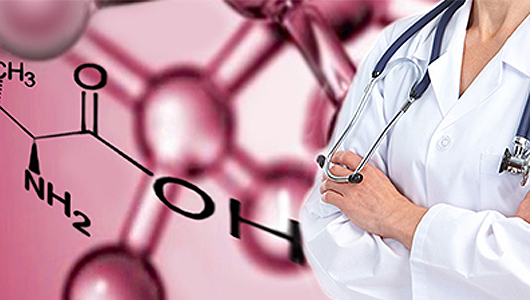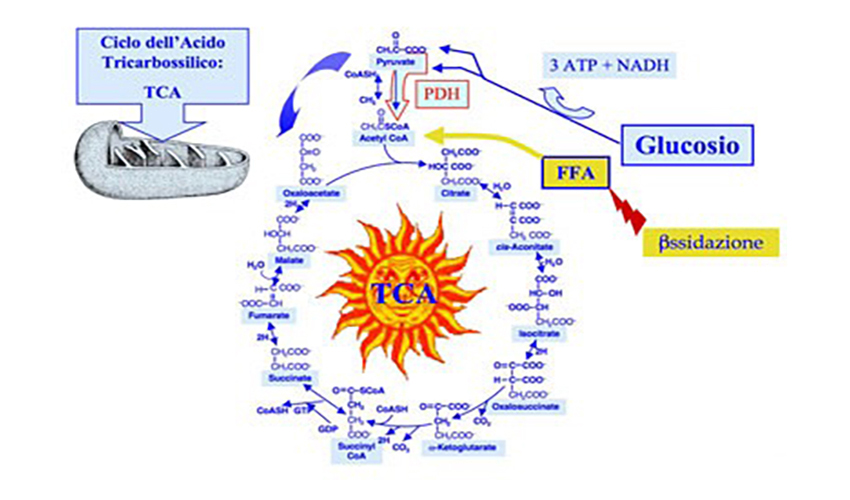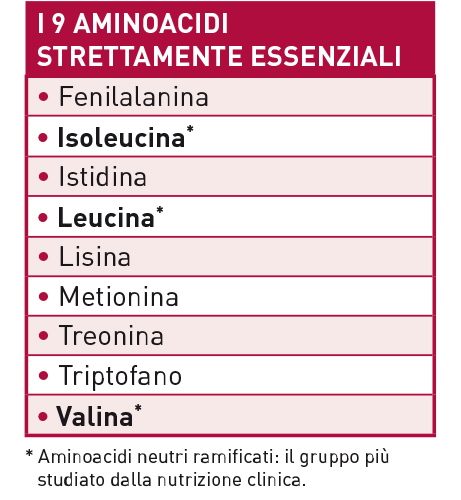Our science
Before comes the scienfic research, then the realization of our products
Our goal is to guarantee high quality products which contain the essential substances which ensure the well being and health of our organism
Our goal is to guarantee high quality products which contain the essential substances which ensure the well being and health of our organism
Our body is able to produce proteins, e.g. to build muscle tissue. However, proteins are essential in all other organs and tissues, for example to produce proteins such as haemoglobin, albumin, immune globulins, collagen, cartilages and other substances essential to our lives, as neurotransmitters, and they all require a large supply of amino acids (AAs). AAs availability influences cellular metabolism and also affects energy production through the Krebs cycle.
Mammals get energy from macronutrients such as proteins, carbohydrates and lipids. While carbohydrates and lipids contain carbon, oxygen and hydrogen, only proteins contain nitrogen. with the noticeable exception of some peculiar fatty acids therefore called “indispensable” fatty acids. The fact that carbohydrates and most of the lipids can be synthesized from proteins is evidence of their importance in the sustaining of vital functions.
The ultimate fate of all nutrients, if they are not used for energy, is to be processed into glucose and stored as glycogen, or transformed into lipids, and stored as triglycerides mainly in adipose tissue.


The citric acid cycle (or Krebs cycle) is the center stage of the main metabolic pathways for energy production (glycolysis and oxidation of fatty acids). With optimal oxygen and glucose utilization conditions, the substrates for the citric acid cycle come mainly from glycolysis. Instead, in case of less than optimal utilization of glucose, the substrates for the production of energy come incrementally from both the oxidation of cytoplasmic fatty acids and from amino acid catabolism.
An increase in the consumption of amino acids in the citric acid cycle, if not accompanied by the adequate intake, can lead to muscle wasting and cachexia.
If the amino acids provide a balanced ratio between the glucose precursors and acetate, glucose completes oxidation, reducing the use of free fatty acids for energy production. The availability of amino acids must also be enough to maintain efficient protein synthesis, thus antagonizing the catabolism and promoting cell protein production.

Recent findings have shown that supplementing specific mixtures of amino acids improves the clinical outlook of patients with diabetes mellitus, renal insufficiency, chronic heart failure, COPD (chronic obstructive pulmonary disease), trauma with loss of mobility and skin lesions, sarcopenia and cachexia.
Specific blends of essential and non-essential amino acids have shown to reactivate protein synthesis in the liver, heart and muscles. This aspect is very important particularly in people of advanced age, characterized by mitochondrial function loss resulting in reduced energy production and increased production of free radicals.


The optimum mixture must contain all essential amino acids, but respect the correct stoichiometric ratio among them. This means giving a percentage to each EAA needed to reflect the right quantitative ratio between amino acids, exactly how to spell “word” means placing the right letters in the right place (w, o, r, d).
Firstly, it must be noted that protein synthesis requires considerable energy expenditure and essential amino acids are indispensable to promote the synthesis ano_imgnd they control protein and energy metabolism. During an illness, the body has an increased demand for essential amino acids which will be used both in synthesis and in the metabolism to maintain energy production.
The metabolic role of proteins has to be very carefully distinguished from that of amino acids. Dietary proteins have a fixed content of amino acids in which the non-essentials are always largely prevalent compared to the essential ones. This is the reason why exceeding the intake of proteins overloads the kidney of NEAAs since NEAAs metabolic products should be eliminated through urine.
Because in proteins normally introduced through diet EAAs are not present in sufficient quantities to fully match the human needs and not in the qualitative ratios of EAAs useful to make it efficient. In a normal diet we introduce too few essential, and not of the quality we need! Moreover, it is useful to bear in mind that with ageing the need and usefulness of EEAs increase as well as the damage caused from excess of non-essential amino acids in dietary protein.